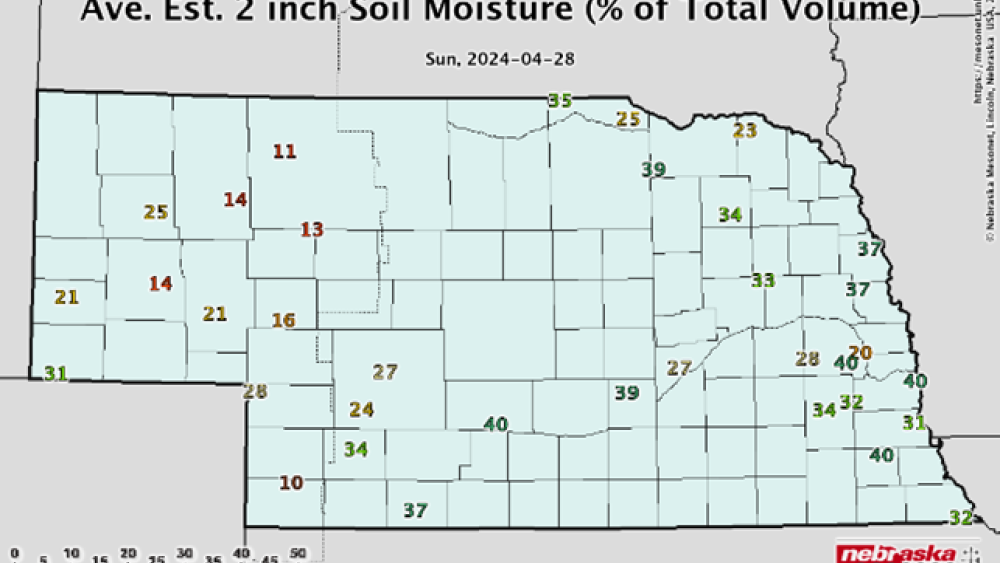Spring is Here: Have Your Eye Out for These Soybean Diseases
Spring is finally here folks! Like it or not, we’ve had a good amount of rainfall in quite a bit of Nebraska in the past few weeks. Combined with the cooler soil temperatures we’re experiencing, there are a few soybean diseases to keep an eye out for.
The ideal soil composition is somewhere around 45% mineral material, 5% organic matter, 25% water, and 25% air. When consulting the photo below, you’ll notice that a good portion of Nebraska has more than 25% water content in the soil. All it takes is a look out the window as you’re driving down the highway to know it’s pretty wet out there.
Two soybean diseases thrive at lower soil temperatures: Pythium and Fusarium. Pythium is a fungal disease that is characterized by water-soaked lesions on the hypocotyl and cotyledons. It’s usually the culprit of damping off we see in early-season soybeans. It’s usually the first disease we see in the spring as the hypocotyl gets very thin and eventually gets pinched off. The second soybean disease to be on the lookout for is Fusarium. Again, Fusarium can cause damping off, but it instead appears as brown lesions on the soybean roots. It does not usually cause seed rot, and chlorotic “scorched” leaves are a telltale sign.
Seed treatment can help with both of these early-season diseases, so be sure to protect your investment by treating your soybean seed with a premium fungicide like LumiGEN® or The Right Stand.



